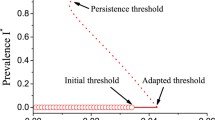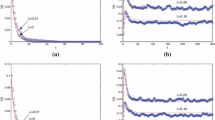Abstract:
We present a detailed analytical and numerical study for the spreading of infections with acquired immunity in complex population networks. We show that the large connectivity fluctuations usually found in these networks strengthen considerably the incidence of epidemic outbreaks. Scale-free networks, which are characterized by diverging connectivity fluctuations in the limit of a very large number of nodes, exhibit the lack of an epidemic threshold and always show a finite fraction of infected individuals. This particular weakness, observed also in models without immunity, defines a new epidemiological framework characterized by a highly heterogeneous response of the system to the introduction of infected individuals with different connectivity. The understanding of epidemics in complex networks might deliver new insights in the spread of information and diseases in biological and technological networks that often appear to be characterized by complex heterogeneous architectures.
Similar content being viewed by others
Author information
Authors and Affiliations
Additional information
Received 20 September 2001 and Received in final form 4 February 2002
Rights and permissions
About this article
Cite this article
Moreno, Y., Pastor-Satorras, R. & Vespignani, A. Epidemic outbreaks in complex heterogeneous networks. Eur. Phys. J. B 26, 521–529 (2002). https://doi.org/10.1140/epjb/e20020122
Issue Date:
DOI: https://doi.org/10.1140/epjb/e20020122




